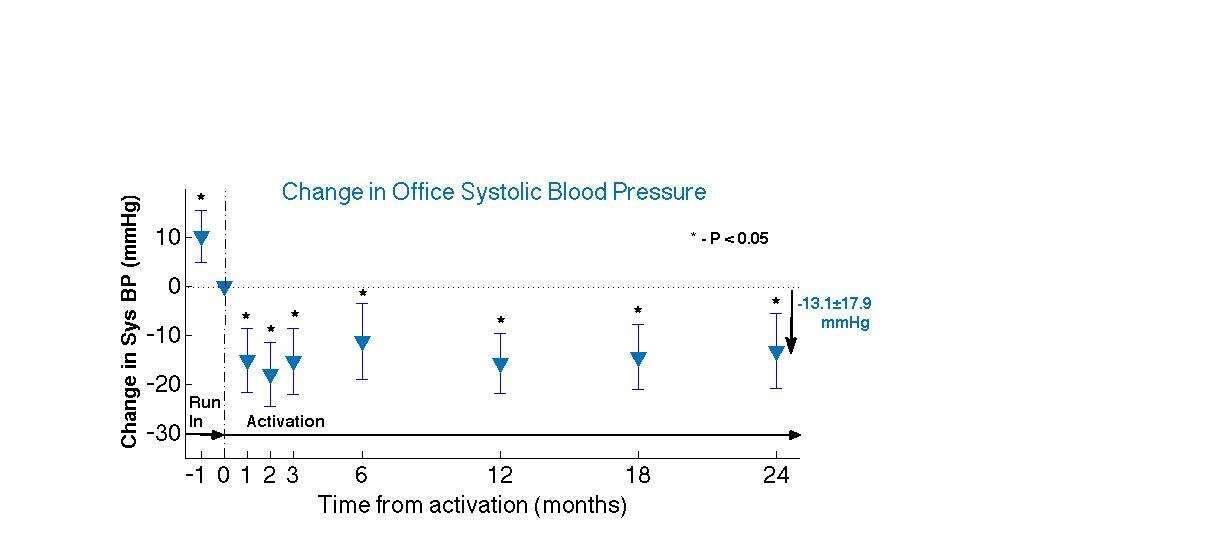
Two-Year Experience with Programmable Hypertensio Control (phc) Therapy
A Novel Treatment for Hypertension
2Cardiology, Na Homolce Hospital, Czech Republic
3Heart and Vascular Center, Semmelweis University Budapest, Hungary
4Latvian Center of Cardiology, Pauls Stradins Clinical University hospital, Latvia
5Cardiology and Angiology Center, Vilnius University Hospital Santariskiu Klinikos, Lithuania
6Departement of Cardiology, Academic Medical Center, Netherlands
7Department of Medicine II, AKH - Universittsklinik fr Innere Medizin II & Sigmund Freud Private University of Vienna, Austria
8Cardiology, Hospital Dr. Stero del Rio, Chile
9Cardiology, University Medical Center Utrecht, Netherlands
10Interne 2 - Kardiologie, Angiologie & Interne Intensivmedizin, Krankenhaus der Elisabethinen Linz GmbH, Austria
11Cardiology, Asklepios Klinik St. Georg, Germany
Background: Despite multi-drug regimens, many patients with hypertension continue to have systolic blood pressure (SBP) above guideline-recommended levels. We recently demonstrated, in 27 patients, that programmable hypertension control (PHC) delivered by the ModeratoTM implantable pulse generator (BackBeat Medical, New Hope, PA, USA) reduced office and ambulatory SBP by ~11 and 16mmHg, respectively after 3 months of therapy.
Purpose: To evaluate the long-term safety and durability of PHC therapy in reduction of blood pressure.
Methods: 21 patients on PHC therapy agreed to be followed beyond the 3-month study period and were seen at 6, 12, 18 and 24 months;
Results: Patients had office SBP of 165±10/79±9mmHg despite an average of 3.3 antihypertensive medications. SBP decreased by 10±12mmHg (p<0.05), during the initial run-in period, without therapy (study participation effect). Following PHC activation, average SBP decreased further and remained significantly lower during the entire follow up period (Figure). At 24 months, SBP decreased by 13.1±17.9mmHg (p<0.001) vs. pre-activation values (23.4±20.5mmHg from baseline). Heart rate decreased by 4.2±8.4bpm (p<0.05) after 24 months. Average LVEF did not change (-0.7±7%, p=NS), but LV end-diastolic volume decreased by 13.8±24.6ml (p<0.05).
Conclusions: In patients requiring a dual chamber pacemaker and persistent hypertension despite appropriate medical therapy, SBP decreased significantly during long-term follow up even after accounting for the initial drop during the run-in period. LV function remained unaltered and end-diastolic volume decreased. Heart rate decreased, suggesting reduction of sympathetic tone. These data support the durability and safety of PHC therapy. A prospective, randomized, double-blind study has been initiated.

Powered by Eventact EMS